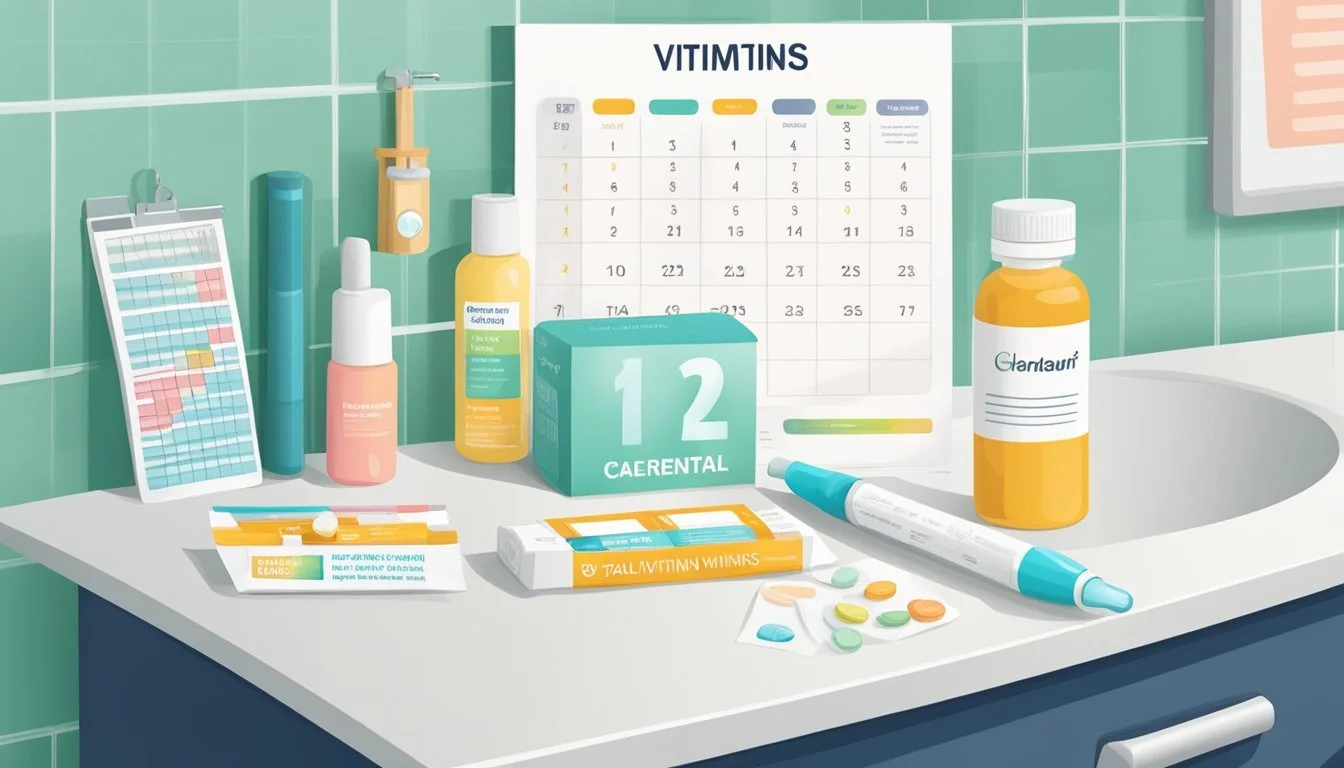FoodMaxx Pregnancy Test
Affordable Option for Early Detection
Pregnancy tests are essential tools for women who suspect they may be expecting. FoodMaxx, a grocery store known for low prices and savings, offers affordable home pregnancy tests among their product selection. These tests detect human chorionic gonadotropin (hCG), a hormone produced during pregnancy, in urine to indicate a positive or negative result.
Taking a home pregnancy test correctly is crucial for accurate results. The best time to test is in the morning using the first urine of the day, as hCG levels are typically highest at this time. It's important to avoid drinking excessive water before testing, as this can dilute urine and potentially lead to false negative results.
For those considering purchasing a pregnancy test from FoodMaxx, it's worth noting that while these tests can be cost-effective, their accuracy may vary. Waiting until at least the first day of a missed period before testing can improve the likelihood of obtaining an accurate result. Some women may choose to confirm their results with a second test or consult a healthcare professional for further guidance.
Understanding Pregnancy Tests
Pregnancy tests are reliable tools for detecting early pregnancy. They work by identifying hormone levels in urine or blood samples. Different types offer varying levels of sensitivity and convenience.
How Pregnancy Tests Work
Pregnancy tests detect human chorionic gonadotropin (hCG), a hormone produced after a fertilized egg implants in the uterus. Most tests use antibodies that react with hCG, causing a visible result. Urine tests typically show lines or symbols, while digital tests display words.
Test sensitivity varies. Some can detect hCG as early as 6 days before a missed period, while others are more accurate later. Following instructions carefully is crucial for accurate results.
Types of Pregnancy Tests
Two main types of pregnancy tests exist: urine and blood tests.
Urine tests:
Available over-the-counter
Can be done at home
Provide quick results (usually within minutes)
97% accurate when used correctly
Blood tests:
Performed at medical facilities
More sensitive than urine tests
Can detect pregnancy earlier
Provide quantitative hCG levels
Home pregnancy tests are popular due to their privacy, affordability, and ease of use. Prices typically range from $8 to $20.
The Role of HCG in Pregnancy Detection
Human chorionic gonadotropin (hCG) is crucial for pregnancy detection. This hormone is produced by cells that form the placenta. HCG levels begin to rise rapidly after implantation, doubling every 48-72 hours in early pregnancy.
Most tests can detect hCG levels of 25 mIU/mL or higher. Some highly sensitive tests may detect levels as low as 10 mIU/mL. HCG becomes detectable in urine about 10-14 days after conception.
Timing is essential for accurate results. Testing too early may lead to false negatives. For best accuracy, wait until the first day of a missed period before testing.
Administering a Pregnancy Test
Proper administration of a pregnancy test is crucial for obtaining accurate results. The process involves following specific instructions, timing the test correctly, and interpreting the results carefully.
Instructions for Use
Remove the pregnancy test from its packaging and carefully read the instructions. Collect a urine sample in a clean, dry container. Dip the test strip into the urine for the recommended time, usually 5-10 seconds. Alternatively, use the provided dropper to place a few drops of urine onto the designated area of the test.
Place the test on a flat surface and wait for the specified time before reading the results. This is typically 3-5 minutes, but can vary by brand. Do not interpret results after the maximum recommended time, as this may lead to inaccurate readings.
Ensure your hands are clean and dry throughout the process to avoid contamination.
Best Time for Test
For optimal accuracy, take the pregnancy test first thing in the morning using your first urine of the day. This urine contains the highest concentration of human chorionic gonadotropin (hCG), the hormone detected by pregnancy tests.
Avoid excessive fluid intake before testing, as this can dilute urine and potentially lead to false-negative results. If testing later in the day, try to hold your urine for at least 4 hours before taking the test.
For most accurate results, wait until after your missed period to test. Some sensitive tests can detect pregnancy up to 5 days before a missed period, but results may be less reliable.
Interpreting Results
Read the test results within the specified timeframe. Most tests display results as lines or symbols:
One line: Negative result
Two lines: Positive result
No lines or invalid symbol: Test malfunction
A faint line in the test area still indicates a positive result. If unsure, retake the test in a few days or consult a healthcare provider.
False-positive results are rare but can occur due to certain medications or medical conditions. False-negative results are more common, often due to testing too early or improper test administration.
For urine tests, accuracy can reach 97-99% when used correctly after a missed period. Remember, no home test is 100% accurate. Confirm pregnancy with a healthcare provider, especially if symptoms persist with a negative result.
Factors Affecting Test Results
Various elements can influence the accuracy of a pregnancy test. Understanding these factors is crucial for interpreting results correctly and avoiding potential confusion.
Medications and Fertility Treatments
Certain medications and fertility treatments can impact pregnancy test results. Fertility drugs containing hCG may cause false positives. Some antibiotics, anticonvulsants, and tranquilizers can also interfere with test accuracy.
Fertility treatments like in vitro fertilization often involve hCG injections. These can lead to false positives if testing occurs too soon after treatment. It's advisable to wait 7-14 days after the last hCG injection before taking a test.
Some medications used to treat thyroid disorders or Parkinson's disease may also affect results. Always consult a healthcare provider about potential interactions between medications and pregnancy tests.
HCG Level Fluctuations
Human chorionic gonadotropin (hCG) levels vary throughout pregnancy and can influence test outcomes. After implantation, hCG levels typically double every 48-72 hours.
Early in pregnancy, hCG concentrations may be too low for detection, leading to false negatives. Testing too early is a common cause of inaccurate results.
HCG levels can also fluctuate due to factors like:
Ectopic pregnancy
Miscarriage
Multiple pregnancies
These variations can sometimes result in unexpected or confusing test outcomes. Repeated testing or consultation with a healthcare provider may be necessary for clarity.
Dilution and Test Sensitivity
The concentration of hCG in urine affects test sensitivity. Diluted urine can lead to false negatives, especially early in pregnancy when hCG levels are low.
To maximize accuracy:
Use first morning urine
Avoid excessive fluid intake before testing
Wait at least 4 hours after last urination
Test sensitivity varies between brands. Some can detect hCG levels as low as 10 mIU/mL, while others require 25 mIU/mL or more. Check the package for sensitivity information.
Expired or improperly stored tests may have reduced sensitivity. Always check expiration dates and store tests as directed to maintain accuracy.
When to See a Healthcare Professional
Knowing when to consult a healthcare provider is crucial for ensuring a healthy pregnancy. Proper medical guidance can address concerns and provide necessary care from the earliest stages.
Confirming Pregnancy with a Blood Test
Healthcare professionals can perform blood tests to confirm pregnancy. These tests detect human chorionic gonadotropin (hCG) hormone levels, which are more sensitive than home urine tests. Blood tests can detect pregnancy earlier, sometimes as soon as 6-8 days after ovulation.
Quantitative blood tests measure the exact amount of hCG, helping to track pregnancy progression. This information is particularly useful for monitoring potential complications or early pregnancy loss.
Early Signs of Pregnancy
Common early signs of pregnancy include missed periods, nausea, swollen breasts, and fatigue. While home tests can detect pregnancy, a healthcare provider can confirm these symptoms and offer guidance.
Unusual symptoms or severe discomfort warrant immediate medical attention. Persistent vomiting, severe abdominal pain, or spotting may indicate complications requiring professional evaluation.
Healthcare providers can also address concerns about symptom management and overall health during early pregnancy.
Seeking Advice on Fertility Issues
Couples trying to conceive should consult a healthcare professional if pregnancy doesn't occur within a year of regular, unprotected intercourse. For women over 35, this timeframe shortens to six months.
Fertility specialists can conduct tests to identify potential issues affecting conception. These may include hormone level assessments, ovulation tracking, and sperm analysis.
Healthcare providers can offer advice on lifestyle changes, fertility treatments, or alternative family-building options. They can also address concerns about previous pregnancy losses or medical conditions that may impact fertility.
Beyond the Test: Next Steps
A positive pregnancy test marks the beginning of an exciting journey. The next steps involve confirming the pregnancy, exploring options, and preparing for the early stages of pregnancy.
Positive Test Follow-Up
After a positive home pregnancy test, scheduling an appointment with a healthcare provider is crucial. They will conduct a blood test to confirm the pregnancy and measure hCG levels. This visit also allows for a thorough health assessment and discussion of prenatal care.
The doctor may perform an ultrasound to determine the pregnancy's viability and estimate the due date. They'll review medical history, discuss lifestyle changes, and prescribe prenatal vitamins.
It's important to track any early pregnancy symptoms like nausea, fatigue, or breast tenderness. These can vary greatly between individuals. Some women may not experience noticeable symptoms in the early weeks.
Considering Fertility Options
For those who've been trying to conceive, a positive test is a significant milestone. It's time to stop any fertility treatments or tracking methods previously used.
If the pregnancy resulted from fertility treatments, close monitoring by a specialist may be necessary. They'll guide the transition from fertility care to regular prenatal care.
For couples still trying, understanding the menstrual cycle and timing of ovulation is key. Tracking basal body temperature and using ovulation predictor kits can help pinpoint fertile days.
Understanding Early Pregnancy
The first trimester is a critical period for fetal development. The uterus begins to expand, and hormone levels rise rapidly. These changes can cause various physical and emotional symptoms.
It's essential to avoid harmful substances like alcohol, tobacco, and certain medications. Maintaining a balanced diet, staying hydrated, and getting adequate rest support a healthy pregnancy.
Many women choose to wait until the end of the first trimester to share their news. This is a personal decision based on individual circumstances and comfort levels.
Product Information
Foodmaxx pregnancy tests offer reliable at-home detection of pregnancy hormones. These affordable options come in various formats to suit different preferences and needs.
Test Features and Varieties
Foodmaxx provides both traditional line tests and digital pregnancy tests. The line tests display results as colored lines, while digital tests show a clear "Pregnant" or "Not Pregnant" readout. Most Foodmaxx tests can detect pregnancy as early as 5 days before a missed period.
The standard line tests are highly sensitive and easy to use. They typically provide results in 3-5 minutes.
Digital tests offer added convenience with their clear display. These tests are slightly more expensive but eliminate the need to interpret lines.
Foodmaxx also offers multi-packs for those who want to test multiple times or confirm results.
Advantages of Foodmaxx Tests
Foodmaxx pregnancy tests are known for their affordability without compromising accuracy. They offer comparable sensitivity to more expensive brands at a fraction of the cost.
The tests are designed for ease of use, with clear instructions included in each package. Wide test strips make sample collection straightforward.
Foodmaxx tests are FDA-approved, ensuring reliability and safety standards are met. They boast over 99% accuracy when used from the day of expected period.
These tests are widely available in drugstores and supermarkets, making them easily accessible when needed.
Test Expiration and Storage
Foodmaxx pregnancy tests typically have a shelf life of 2-3 years from the manufacturing date. The expiration date is clearly printed on each package.
It's crucial to check this date before use, as expired tests may give inaccurate results.
Store tests in a cool, dry place away from direct sunlight. Avoid keeping them in bathrooms, where humidity can affect performance.
Unopened tests remain stable until the expiration date if stored properly. Once a test is removed from its foil wrapper, it should be used immediately for best results.
Foodmaxx recommends not using tests that have been exposed to extreme temperatures or moisture.








